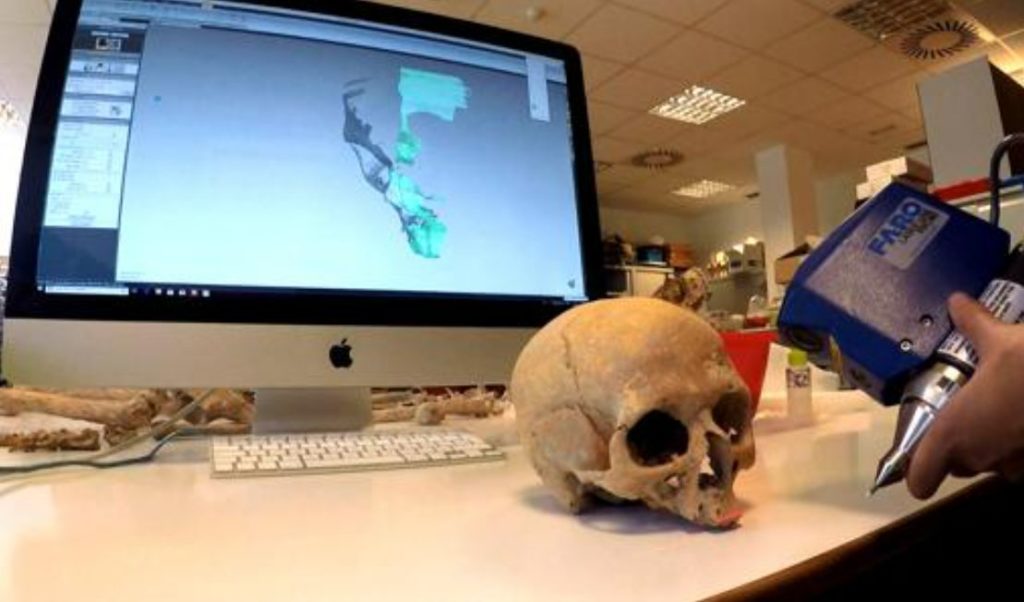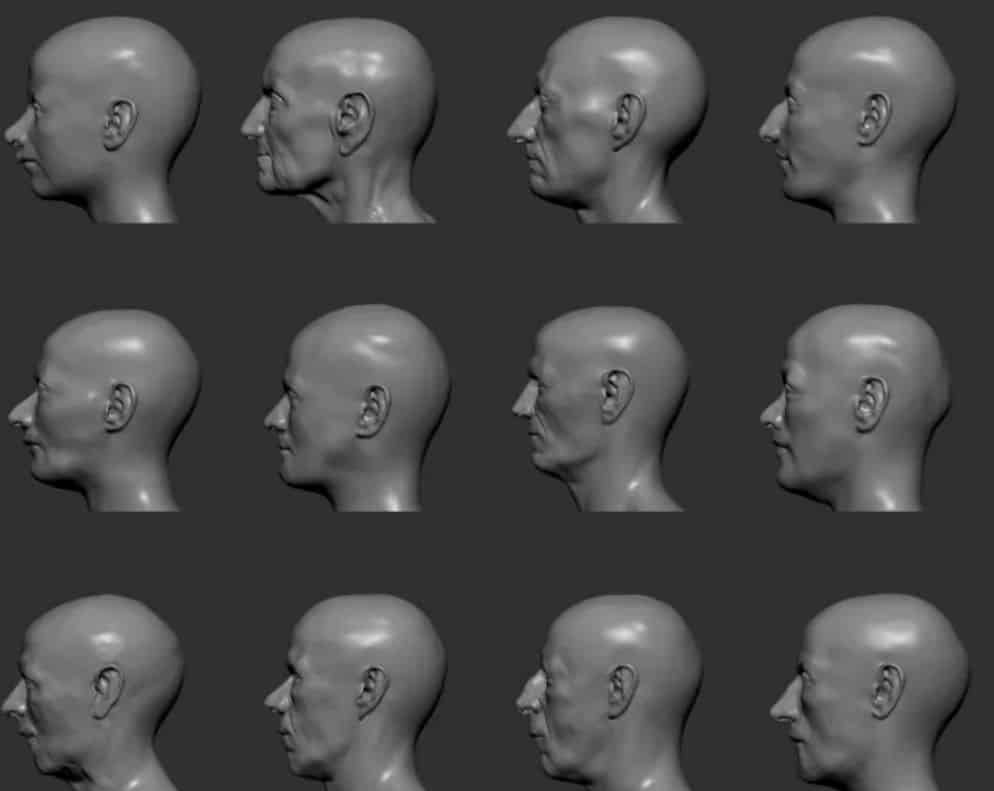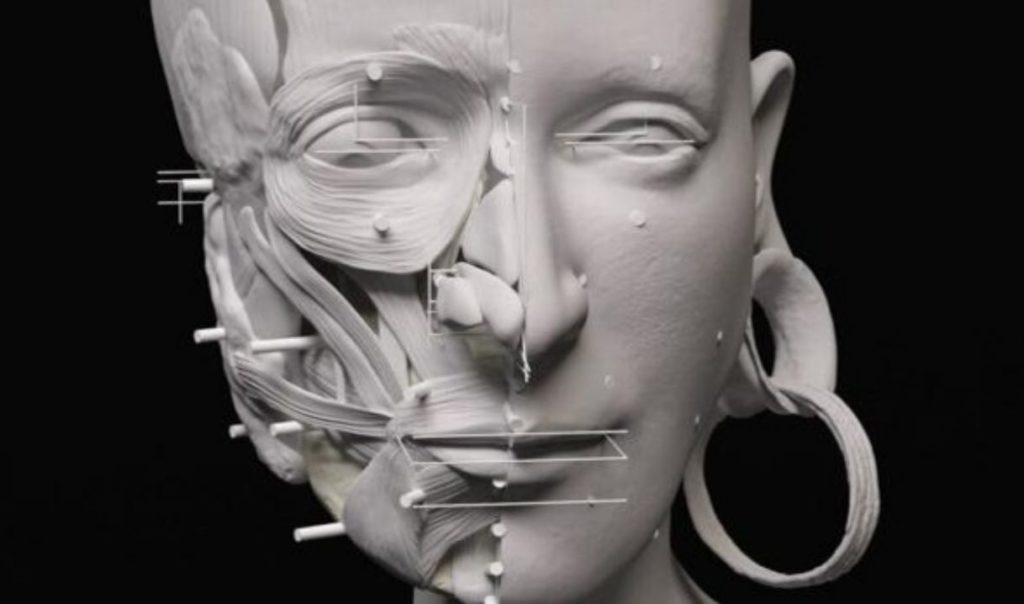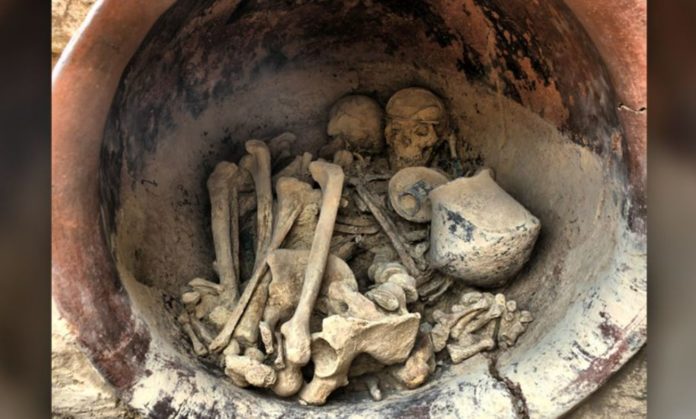A meticulous scientific reproduction exposes the ancient people of El Argar’s facial traits.
The goal of the study is to investigate if ‘family resemblance’ can accurately identify different degrees of connection.
In March, archaeologists in La Almoloya (Murcia) revealed the discovery of a 3,700-year-old tomb in which a man and a woman laid with a valuable trousseau. A diadem that belonged to the lady stood out among the silver ornaments, implying her power and position.
They also governed in El Argar’s society, which was sophisticated, urban, marked by economic disparity, and possessed the features of an advanced state, but to what extent is unclear.
Now, a new study has recreated the face of that “powerful, maybe even frightening” woman buried with a silver diadem in Bronze Age Spain that gives her wearing and large hoop earrings dropping from ears a serene look.
A scientific Illustrator has digitally reconstructed the woman’s face, as well as the faces of others buried at the site known as La Almoloya, using the fragmentary skull and jewelry from the burial.
“The biggest challenge about this facial reconstruction was that the upper portion of her skull did not survive the ages,” said Joana Bruno, a collaborator with the La Almoloya archaeologists at the Autonomous University of Barcelona.
“Luckily, the diadem (the silver crown) was found in place, around her head, so that gives us some measure for her head, but it was still a challenge.”
Since archaeologists discovered her tomb in 2014, the identity of the diadem-wearing woman has piqued scientists’ interest. The diadem, beaded necklaces, silver-crafted rings, bracelets, spiral hairpieces, and spiral earplugs, as well as a silver-rimmed drinking pot and silver-handled awl, a tool used to piece textiles, are of superior quality and are more valuable than the man’s burial goods. The researchers speculated at the time that the woman’s wealth indicated she had more influence than her burial companion, especially since she outlived him and was still buried with valuables.
The site’s impressive preservation of many of its original inhabitants made Bruno digitally recreate the woman’s face.
“La Almoloya is just a fascinating time capsule,” she said. “And, since the DNA can tell us more about their kinship, it is also an opportunity to see if these faces somehow carry similar features that could hint at those shared relationships.”
Prior to conducting any virtual reconstruction, anthropologists clean, stabilize, and study the deceased’s skeleton to ascertain the individual’s gender, age at death, general health, and other factors.

“This information is always taken into account when producing the face reconstruction,” said Bruno.
In the case of the Bronze Age woman, she died between the ages of 25 and 30 and was born with a number of congenital abnormalities, including a missing neck vertebra and rib.
Bruno then takes precise measurements and performs a laser scan of the skull and lower jaw.
“The laser scan allows me to work with a digital replica of the original and minimize the manipulation of the bones, which are fragile objects,” she said.
Later, to “flesh out” the face, Bruno used datasets available for speculatively predicting the position of facial features such as the eyes, nose, and mouth, as well as assessing the tissue thickness, she explained.
“By doing this, I start ‘mapping out’ the surface of the skin and, layer by layer, a face starts to emerge,” Brunos said.

However, she was forced to make some speculative estimates. Bruno depicted the bones that did not survive as gray and transparent in a movie depicting the rebuilding process to emphasize their absence.
“The earlobes were a more straightforward decision,” Bruno said. “The earplugs you see in the face reconstruction were found in her tomb, one on each side of her skull. I used laser scans of the earplugs and the diadem in the face reconstruction.”
The entire process and Bruno’s collaboration with anthropologists highlights “the ability to estimate and ‘rebuild’ missing skeletal portions with the highest possible accuracy and without damaging the original,” Cristina Rihuete Herrada, a professor of archaeology at the Autonomous University of Barcelona and a co-researcher of the 2021 study, told Live Science in an email.
“Thanks to the 3D laser scanning of the jewels, Joana has been able to show us that woman’s stunning shimmering look.”
Bruno is presently reconstructing other El Argar folks from La Almoloya “using the faces I reconstructed from their skulls, and including the information generated by the archaeological and genetic research,” she said.

“It is important to be aware that these bones we now see were real people, with their own domestic dramas, who laughed when someone told a joke, who cared for loved ones and lived in a very different world from our own.”
Image Credit: Joana Bruno / ASOME / Autonomous University of Barcelona
You were reading: A “powerful, maybe even frightening” woman wearing diadem reappears after 4,000-years
